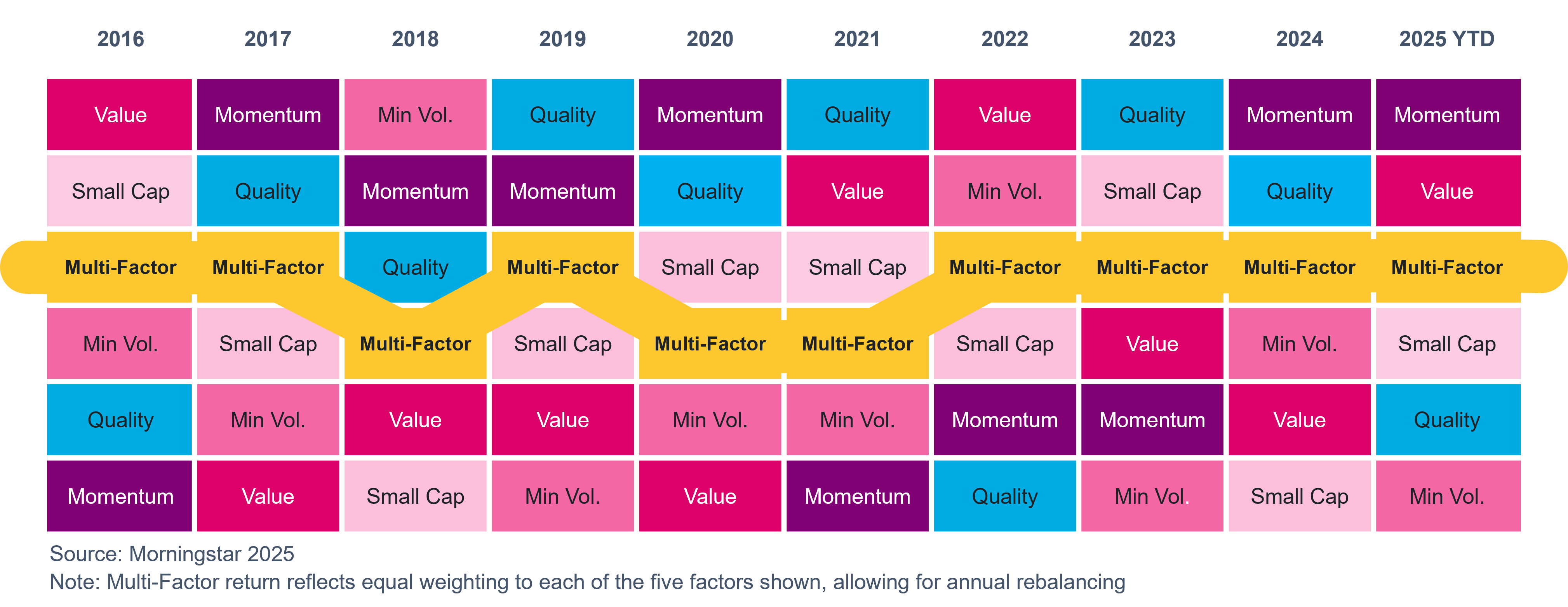3 reasons why multi-factor investing deserves a place in your portfolio
29 Oct 2025
In today’s advice market, IFA firms face a familiar challenge: deliver better outcomes for clients, clearly demonstrate value, and keep costs under control – all while satisfying rising regulatory expectations.
At HRIS, we believe the answer lies in well-diversified, cost-effective portfolios – built for the long-term, using robust research and clear, repeatable processes.
One of the elements we use to help deliver well-diversified, cost-effective portfolios is multi-factor investing. While it’s not a standalone solution, multi-factor investing plays a valuable role in strengthening portfolio design and deserves serious consideration by firms looking to evolve their centralised investment proposition.
Here are three reasons why:
-
It offers cost-effectiveness and long-term performance potential
Traditional active management can be expensive and inconsistent. While passive investing helps keep costs down, it may lack precision.
Multi-factor investing offers an effective ‘third way’ – a rules-based, evidence-backed approach that targets the characteristics shown to drive long-term equity performance (such as value, momentum, quality and size). This makes it possible to seek outperformance of the market, without paying high fees often associated with active management.
Why it matters: It helps firms demonstrate value for money, by seeking to outperform traditional passive management, whilst costing less than active management. Although costs will vary per provider, multi-factor funds may typically be in the region of 50% cheaper than their traditional active peers.
-
It can improve risk-adjusted returns
Multi-factor investing is about building smart, resilient portfolios, which perform strongly and support overall diversification (by blending complementary factors, you diversify across multiple return drivers, much like diversifying across asset classes).
The result? Portfolios that work harder for clients, with reduced exposure to any one market narrative and greater potential to outperform market-cap weighted benchmarks over time.
Why it matters: It can smooth the investment journey for clients and help advisers deliver on long-term planning goals. We demonstrate the smoothing effect in the chart below, where a ‘Multi-Factor’ approach performs more predictably and consistently than individual factors which can be more volatile.

-
It supports clearer conversations with clients
Multi-factor investing provides an investment process that’s transparent, systematic, repeatable, and backed by research. This transparency can help support client conversations, helping answer questions such as what’s in a portfolio, why it’s there, and how it supports their goals.
Why it matters: You can talk with confidence about portfolio design, including stock positions in portfolios, and demonstrate a clear value story to your clients.
Final thought
At HRIS, we see multi-factor investing as an important part of our “tool kit” when it comes to building consistent, cost-effective portfolios for today’s advice market.
If you haven’t considered multi-factor investing yet, now’s the time to take a closer look.
Want to learn more?
We’re hosting a short webinar on the 19 November:
Beyond active vs passive: delivering more value for clients
Or, if you’d like to discuss how our approach could support your firm’s investment proposition, get in touch.
